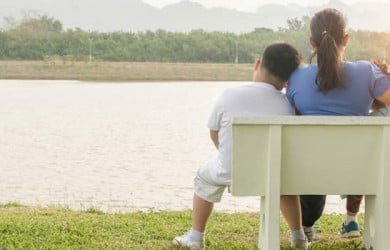Expert Advice on Understanding Abuse in Dating Relationships

 Listen to this article
Listen to this articleAbuse is quite a taboo topic in our society; there has been a push in recent years to encourage open conversation about what it is and the effects is can pose on a person’s life. It is so complex that it makes it difficult to identify at times; it presents far differently in each situation. Comparisons are limited and too vague since behaviors and actions can vary greatly from one relationship to the next. However, though the behaviors themselves may vary from person to person, there are some common characteristics that exist and can aid in the identification and understanding of possible abuse in relationships.
Prevalence of abusive behaviors in dating relationships
Studies indicate that young women between the ages of 16 and 24 experience the highest rate of intimate partner violence. This does not mean other genders or age ranges are not at risk, but violent behavior in relationships often takes root between the ages of 12 and 18. The severity of violence and abuse in relationships is often greater when abusive behaviors began in adolescence.
Identifying abusive behaviors
Individuals who have experienced abusive behaviors in their current or past relationships have a more difficult time understanding what unhealthy relationship patterns look like. They often are experiencing the short and/or long-term effects of abuse and perhaps recognize them as part of “normal life.” But what about those of us looking from the outside in? Is there an easy way to spot an unhealthy relationship when we see one? Due to the varied nature of abusive behaviors, there is no perfect formula to process whether or not what you are seeing would be considered abuse. Significant warning signs, however, are often easy to identify; if a number of these are present, it may be a good idea to take a closer look and examine whether these are an indication of something long-term and much more dangerous.
Warning signs can include each of these or some variation of them: fearful of the romantic partner, lying to family and friends to cover up abusive actions or behaviors, careful of what is said to the person to prevent making him/herb3 gg angry, being criticized or put down by the other person constantly despite doing everything possible to please him/her, being purposefully embarrassed by him/her in front of family and friends, kept in the house or restricted from going places to be with family/friends, accused of cheating, and/or manipulated with the use of threats or lies to instill fear.
When it is time to reach out, who can I call?
So let’s say you are a friend or family member who notices these warning signs of abuse in relationships your loved one is involved with. What do you do? First, do not be afraid to step in and act on your instincts. If confronted, a victim will not likely admit to being a victim. Remember, they may not even be truly aware. Be respectful when approaching the person and encourage him/her. It is important for the victim to feel supported rather than blamed for the actions of their partner. As a bystander it is also vital that you be aware of what resources are offered in your community. Most will have plenty of resources within reach for men, women, or children who feel they are in an unsafe environment and need assistance in leaving. Often, there is a least one shelter in the community that offers a safe haven for victims of domestic violence. These shelters are one of the greatest resources as they offer connections to support groups, legal advocates, and outreach programs. Remember, as mentioned before, a victim may have been one for so long they are unaware of the risks and dangers involved. While it is easy to think about confrontation, it is usually more difficult to actually have that open conversation with someone you love. Be sure to back up your concerns with observations, give the person options, and reiterate your willingness to support them. Never be afraid to contact emergency personnel if the threat of violence is too great and you believe someone to be at immediate risk. Do what you can with what resources you have.
Whether you are someone looking in from the outside or someone experiencing abuse, the most valuable resource is often the person who simply listens. The warning signs of abuse in relationships display abusive behaviors which are a direct violation of the trust once placed in that person and it is extremely difficult for many to trust another person so fully again. However, a willingness to listen and not judge is one of the simplest ways to assist someone experiencing abuse. Building that relationship and opening the door for further assistance can be the first step in allowing that victim to step away from the shadow of their abuser.
 Tips
Tips
Write your tip or submit a video tip
All tips are reviewed before the publishing.
Share this article on
Want to have a happier, healthier marriage?
If you feel disconnected or frustrated about the state of your marriage but want to avoid separation and/or divorce, the marriage.com course meant for married couples is an excellent resource to help you overcome the most challenging aspects of being married.
























 We'd love your feedback!
We'd love your feedback! Thanks for your feedback!
Thanks for your feedback!
